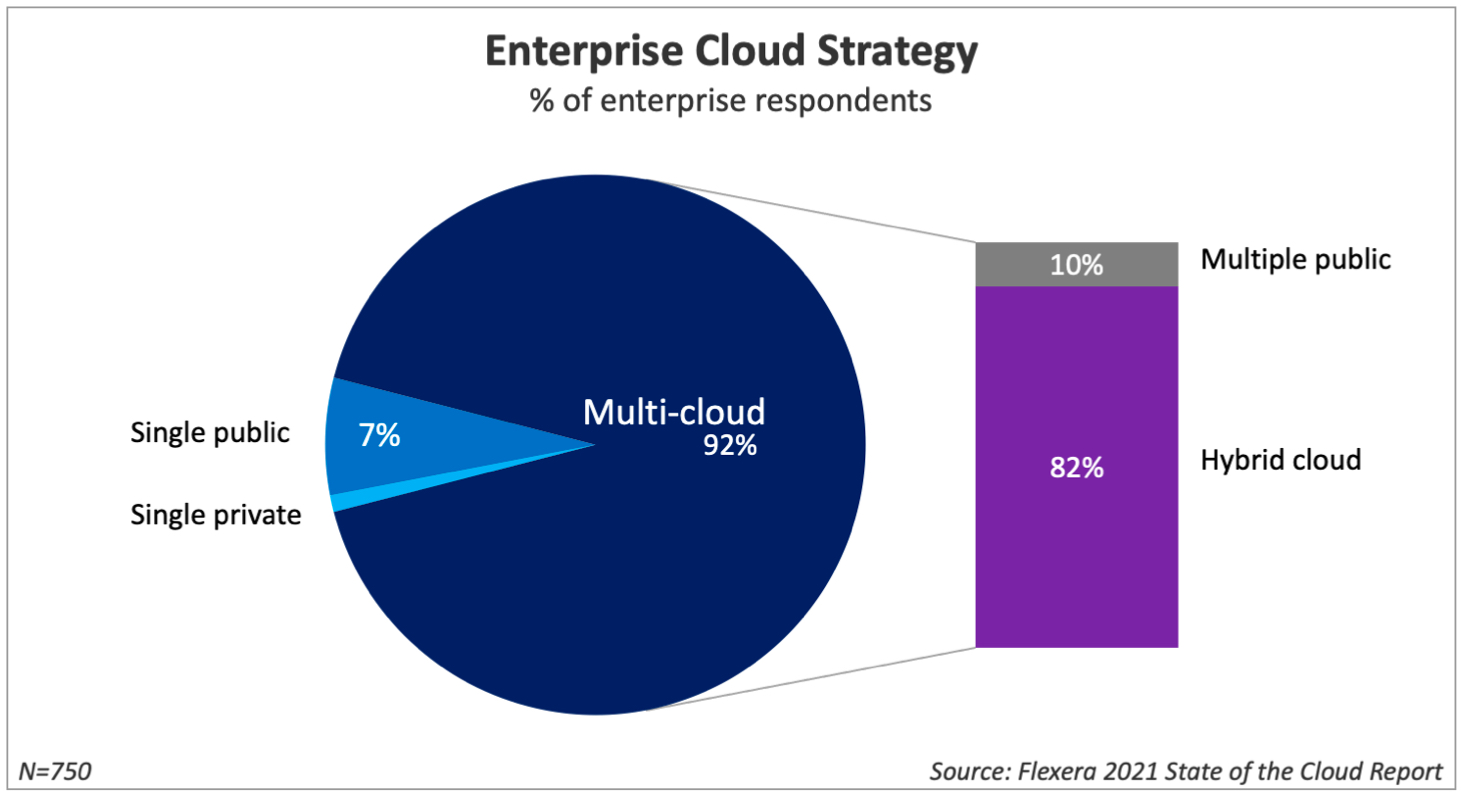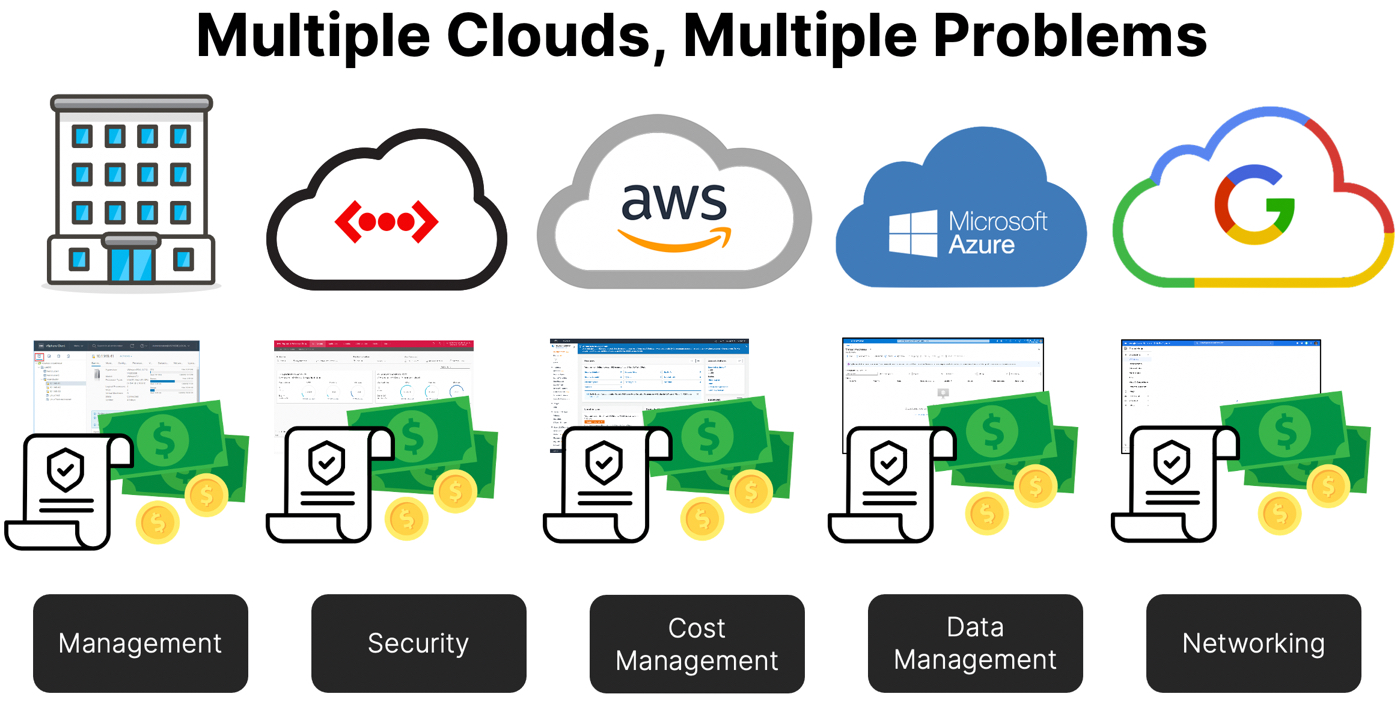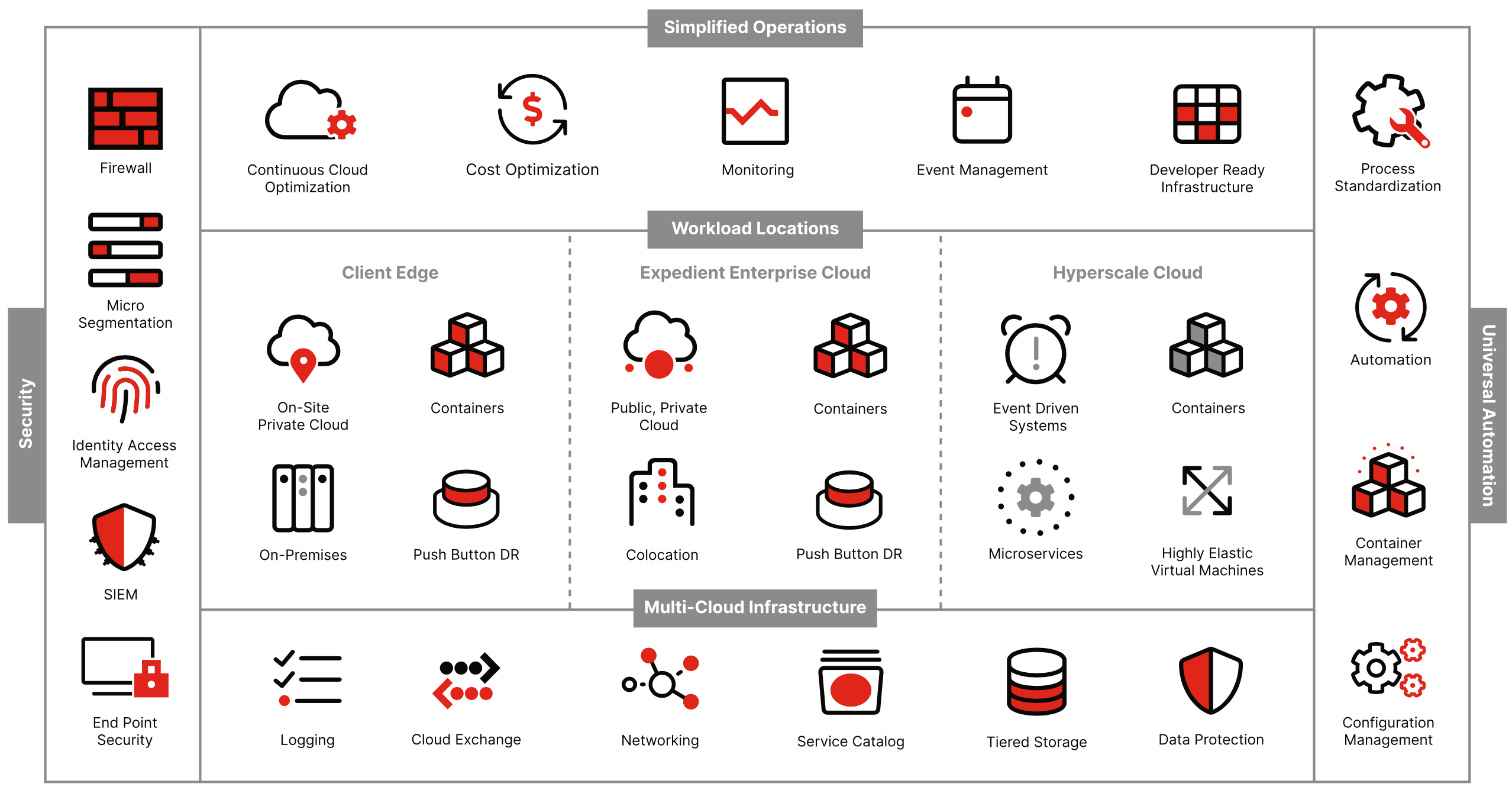If you have been with us over the last few weeks, you know that we have been asking you to Cloud Different, with the three key elements of Cloud Different being to Cloud Smarter, Cloud Safer, and Cloud Simplified. Today, I am going to dig a little deeper into our last area for discussion, Cloud Simplified.
Over the last few months I’ve noticed that most companies are leveraging multiple clouds. The Flexera 2021 State of the Cloud Report suggests that organizations currently are using 2.6 public and 2.7 private clouds on average. Also, they’re experimenting with an additional 1.1 public clouds and 2.2 private clouds.

That same report suggests that enterprises have almost entirely embraced multi-cloud: 92% of respondents reported having a multi-cloud strategy. Eighty-two percent are taking a hybrid approach, combining the use of both public and private clouds.

While I believe these numbers to be true based on my own anecdotal research from countless discussions with industry analysts, thought leaders, CIOs, cloud leaders, and heads of IT infrastructure, I also believe that when most people say they have a multi-cloud strategy, what they actually mean is “I just found out I am already using multiple clouds and need to figure out what to do about it” or “I picked AWS as my cloud platform because they are the market leader, but I also run Microsoft Office 365 so I need Azure as a second platform and have some folks doing work in that too”. In my opinion, both statements are stumbling into multiple clouds, and they have nothing to do with a true multi-cloud strategy. And without a clear strategy, more clouds just means more problems.

Whether it be trying to understand your costs, managing all of the different security tools and policies you need to keep track of in each cloud, upskilling your team to understand all the services offered by each cloud, or keeping track of where all your data is, each cloud you add to your environment increases the management complexity and operational hassles exponentially. That is why it is critical that you are proactive about managing the complexity that crops up from leveraging multiple clouds. You must find ways to simplify your cloud operations.
The conversation starts with understanding that hyperscale does not equal cloud. There are fit-for-purpose enterprise clouds that can be used to manage steady-state enterprise class workloads and simplify your transition. Leveraging an enterprise cloud for certain workloads can help to speed up your migration into a cloud operating model and take advantage of existing operational knowledge and skills rather than trying to upskill the entire organization or refactor all of your applications. This will allow you to focus your organizational upskilling on the teams and applications that can gain the most from refactoring onto modern architectures and hyperscale clouds.
From there, you should leverage a set of multi-cloud universal services that will enable you to manage your entire IT landscape from on-premises to co-location to cloud in a single interface.
Your multi-cloud services need to help you manage your applications and simplify your effort regardless of workload across four key areas: infrastructure, security, operations, and automation.
Let’s start with infrastructure. Here you need a set of services that can give you the networking capability to quickly get from your user to your application regardless of where the application sits. But you also need storage that can be accessed from anywhere. You can’t be moving your data back and forth between clouds as you will incur huge data transfer costs. Finally, you need a way to keep your data safe, whether it be backups or encryption.
So think about security across all your clouds. To keep things simple, you’ll want an integrated suite of best-of-breed security tools that works across all your workload locations with a single set of security policies. We went into depth on this in our Cloud Safer blog so I will send you there for more information.
Next, think about management complexity. How much does your environment cost? Is it performing? Are your environments sized correctly? All this information is available out of the box with each cloud provider, but takes up an incredible amount of time when you have to manage it cloud by cloud with different interfaces each time. That’s where a single pane of glass to manage your operations helps simplify your job.
Finally, you want that universal automation capability that can help you properly govern your landscape and ensure that you maintain proper compliance and approvals across all of your clouds.
There is a lot here to think about in a multi-cloud world. We created Expedient CTRL, our suite of multi-cloud universal services, to help you make sense of it all and simplify your environment regardless of where your workloads sit.
At Expedient, we focus on simplifying IT operations to enable our clients to accelerate their cloud journey. Expedient CTRL multi-cloud universal services is but one example where we help you simplify your operations.
Want to learn more?

